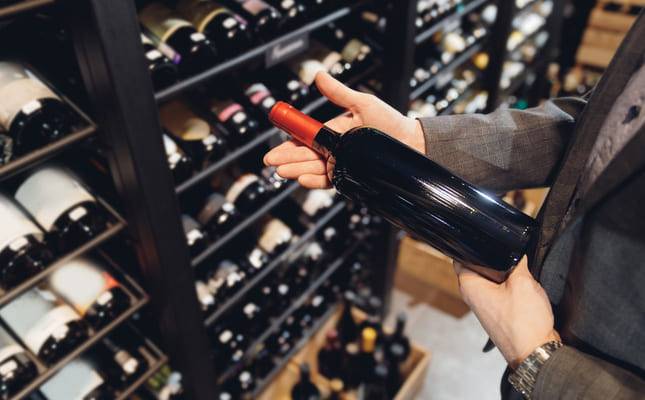Fine wine and fine dining market hits €58 billion as luxury demand grows globally
Europe leads in production and consumption while Asia and Middle East emerge as new growth regions
2025-04-10

The global fine wine and restaurant sector reached a combined value of €58 billion in 2024, according to a new report by Bain & Company and Altagamma. The study, titled the Fine Wines and Restaurants Market Monitor, is the first of its kind from Bain and highlights how fine wine has become a core part of the luxury market, alongside fashion, jewelry, and watches.
The fine wine segment alone was valued at €30 billion last year, despite representing just 1.5% of total wine consumption by volume. This reflects the high price point and exclusivity of the category. Fine dining also saw strong growth, rebounding by 27% since 2022 to reach €28 billion. Europe remains the global leader in this space, hosting more than half of the world’s 14,000 high-end restaurants.
Claudia D’Arpizio, partner at Bain & Company and lead author of the report, said fine wines are more than just beverages—they are symbols of prestige and celebration. She noted that they serve different roles for different consumers: daily indulgence for wealthy individuals, special occasion enjoyment for broader audiences, and long-term investments for collectors.
Fine wines now account for 11% of the total wine market value, showing their premium status. However, after a decade of steady growth, the market experienced a slight decline of 2-3% in 2024. Analysts attribute this to inflation-driven consumer shifts and growing interest in alcohol moderation among younger generations.
The market is highly fragmented. While the top 10 brands hold about 35% of global market share—similar to other luxury sectors—more than 400 producers operate in the space. The market is divided into three main segments: Collector (€1-2 billion), Connoisseur (€8-9 billion), and Cult (€19-20 billion). Each segment has its own distribution channels and competitive dynamics.
Europe continues to dominate production, accounting for 75% of global fine wine output in 2023. Europe and the Americas together consume about 80% of all fine wine. However, new markets are emerging in Asia Pacific and the Middle East. Japan, Southeast Asia, and Gulf countries are seeing increased demand driven by tourism and rising interest in luxury experiences.
Climate change is also affecting production patterns. Southern wine regions are facing higher temperatures—up by 3°C during key growing periods—and more frequent droughts. Meanwhile, northern areas like Denmark are becoming more suitable for viticulture. If current trends continue, grape varieties like Cabernet Sauvignon could become common in central and northern Europe by the end of the century.
In terms of business activity, the United States led consolidation efforts in 2024 with 30 mergers and acquisitions totaling €8 billion. France and Italy also saw increased M&A activity with ten deals completed this year.
Fine wine has also proven resilient as an investment asset. Over the past decade, prices have more than doubled. Indices such as Liv-ex Champagne 50 and Italy 100 rose by 34% and 20%, respectively, over the last five years—outperforming other luxury categories like handbags or watches.
Consumer behavior is shifting toward premiumization. Diners are spending more on quality rather than quantity. Wine pairings now contribute up to 40% of revenue at Michelin-starred restaurants. Sparkling wines have become especially popular for out-of-home consumption due to their association with celebrations and tourism experiences.
However, challenges remain. The rise of NoLo (no- and low-alcohol) beverages among Gen Z consumers could impact future demand. Brands will need to adapt their offerings to stay relevant with younger audiences.
Looking ahead, Bain forecasts that the fine wine market will grow to between €35 billion and €40 billion by 2030, representing an annual growth rate of 4-6% starting in 2025. But geopolitical factors could pose risks. Recent U.S. tariffs imposed under President Donald Trump may affect trade flows, particularly at lower price points.
France continues to dominate the high end of the market with nine out of ten top brands and accounting for 95% of retail value in this segment. Italy offers greater diversity with over 1,000 grape varieties across 20 regions compared to France’s 250 grape types across 13 regions.
As new markets open up and climate conditions reshape production zones, both producers and investors are watching closely. The industry is entering a new phase where tradition meets innovation—and where experience plays an increasingly central role in how consumers engage with fine wine and dining.
Founded in 2007, Vinetur® is a registered trademark of VGSC S.L. with a long history in the wine industry.
VGSC, S.L. with VAT number B70255591 is a spanish company legally registered in the Commercial Register of the city of Santiago de Compostela, with registration number: Bulletin 181, Reference 356049 in Volume 13, Page 107, Section 6, Sheet 45028, Entry 2.
Email: [email protected]
Headquarters and offices located in Vilagarcia de Arousa, Spain.